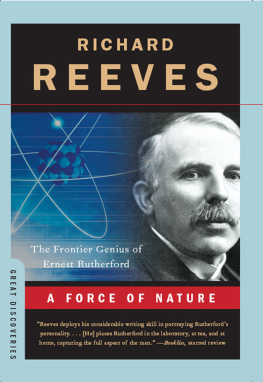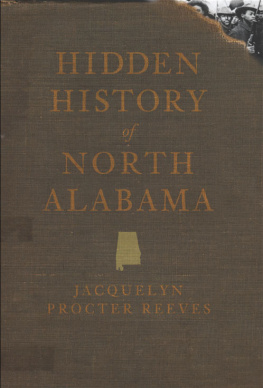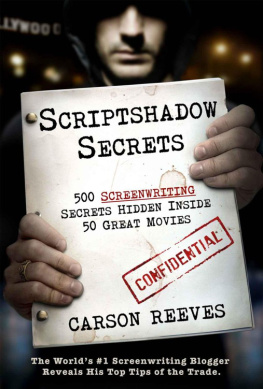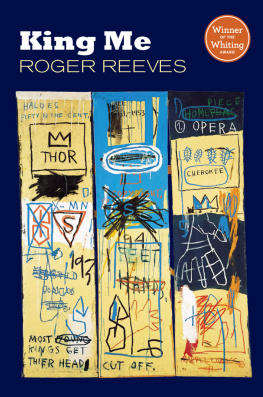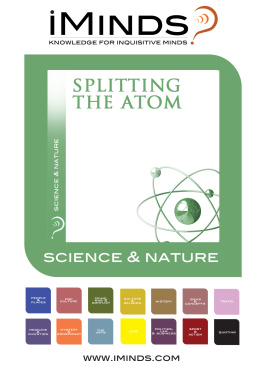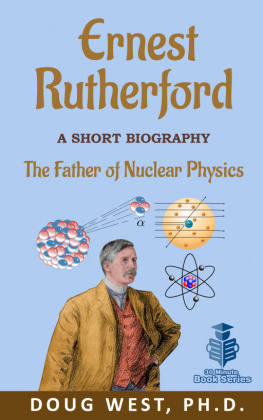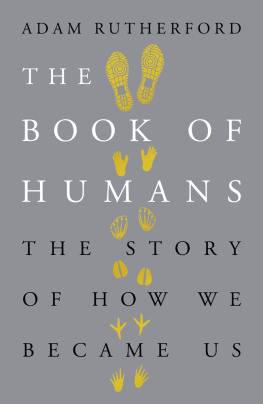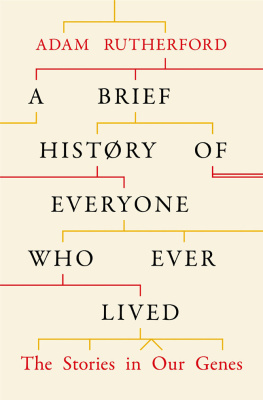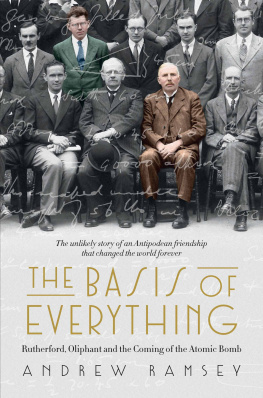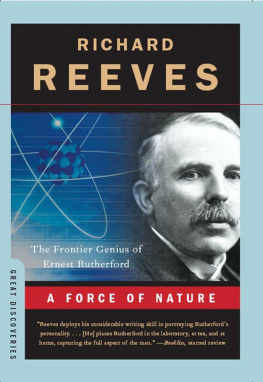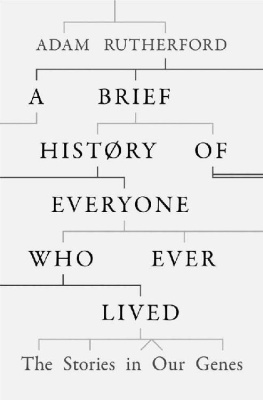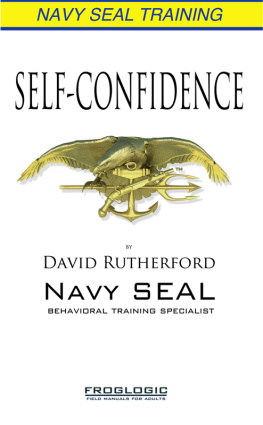PUBLISHED TITLES IN THE GREAT DISCOVERIES SERIES
DAVID FOSTER WALLACE
Everything and More: A Compact History of
SHERWIN B. NULAND
The Doctors Plague: Germs, Childbed Fever, and the Strange Story of Ignc Semmelweis
MICHIO KAKU
Einsteins Cosmos: How Albert Einsteins Vision Transformed Our Understanding of Space and Time
BARBARA GOLDSMITH
Obsessive Genius: Marie Curie: A Life in Science
REBECCA GOLDSTEIN
Incompleteness: The Proof and Paradox of Kurt Gdel
MADISON SMARTT BELL
Lavoisier in the Year One: The Birth of a New Science in an Age of Revolution
GEORGE JOHNSON
Miss Leavitts Stars: The Untold Story of the Forgotten Woman Who Discovered How to Measure the Universe
DAVID LEAVITT
The Man Who Knew Too Much: Alan Turing and the Invention of the Computer
WILLIAM T. VOLLMANN
Uncentering the Earth: Copernicus and The Revolutions of the Heavenly Spheres
DAVID QUAMMEN
The Reluctant Mr. Darwin: An Intimate Portrait of Charles Darwin and the Making of His Theory of Evolution
RICHARD REEVES
A Force of Nature: The Frontier Genius of Ernest Rutherford
FORTHCOMING TITLES
Dan Hofstadter on the Legacy of Galileo Lawrence Krauss on the Science of Richard Feynman Michael Lemonick on William Herschel, the Discovery of Uranus and the Invention of Modern Astronomy
General Editors: Edwin Barber and Jesse Cohen
BY RICHARD REEVES
President Reagan: The Triumph of Imagination
President Nixon: Alone in the White House
President Kennedy: Profile of Power
What the People Know: Freedom and the Press
Passage to Peshawar
American Journey: Travelling with Tocqueville in Search of
Democracy in America
Convention
A Ford, Not a Lincoln
A Force of Nature: The Frontier Genius of Ernest Rutherford

RICHARD REEVES
A Force of Nature
The Frontier Genius of Ernest Rutherford

ATLAS & CO.

W. W. NORTON & COMPANY
NEW YORK LONDON
Copyright 2008 by Richard Reeves
All rights reserved
For information about permission to reproduce selections from this book, write to Permissions, W. W. Norton & Company, Inc., 500 Fifth Avenue, New York, NY 10110
Library of Congress Cataloging-in-Publication Data
Reeves, Richard, 1936
A force of nature: the frontier genius of Ernest Rutherford /
Richard Reeves.1st ed.
p. cm.
Includes bibliographical references.
ISBN: 978-0-393-07604-2
1. Rutherford, Ernest, 18711937. 2. PhysicistsEnglandBiography. 3. PhysicistsNew ZealandBiography. 4. ScienceEnglandHistory20th century. 5. ScienceNew ZealandHistory20th century. 6. Nuclear fission. 7. Radioactivity.
I. Title.
QC16.R8R44 2008
530.092dc22
[B]
2007033184
Atlas & Co.
15 West 26th Street, New York, N.Y. 10010
W. W. Norton & Company, Inc.
500 Fifth Avenue, New York, N.Y. 10110
www.wwnorton.com
W. W. Norton & Company Ltd.
Castle House, 75/76 Wells Street, London W1T 3QT
This book is for Ian, Alex and Aidan Fyfe,
and Rory Catherine ONeill.
A Force of Nature
Contents
I NTRODUCTION
O n a seventh-floor hallway wall of the physics building at Stevens Institute of Technology, one of the oldest engineering schools in the United States, there is a poster published by the American Physical Society titled A Century of Physics. It reads, in part:
By the end of the 19th Century, after more than 2000 years of struggle that began with the Greek philosophers, physical scientists had reason to believe that they were beginning to understand the Universe. Their theories of matter and energy, of electricity and magnetism, of heat and sound and light were confirmed in laboratories throughout the world with increasing precision. Experimentation was the method, and mathematics the language of a powerful, coherent body of knowledge called classical physics.
In 1911, the atomic nucleus was found. To explain the recoil of alpha particles from thin gold foils, New Zealand born physicist Ernest Rutherford, working in England, proposed the nuclear model of the atom.
Ernest Rutherford, a big, boisterous country boy from the frontier of New Zealand, created the science we call nuclear physics. He made a new world, different from what the Greeks believed, different from what had been suggested by Sir Isaac Newton, the greatest of classical physicists. Rutherford, born in 1871, fifteen mountain miles from the nearest town, proved that the atom was not the unseeable, indivisible solid sphere that made up all the world and universe. Working with his hands, the simplest of mechanical equipment, and, most of all, a mind plowing ahead like a battleship, the young New Zealander found and explored a new worlda subatomic world of swirling electric particles and forces beyond most human comprehension. A charismatic man not above self-promotion, Rutherford later said, I have broken the machine and touched the ghost of matter.1
I had graduated from Stevens, with a degree in mechanical engineering. A thousand times and more I had walked up the hill to Castle Point, a stunning promontory overlooking the towers of mid-Manhattan across the Hudson River. I had stood on that point with hundreds of my classmates on a clear night in 1957 watching a Soviet satellite, Sputnik, a dart of light moving across the darkness. We and much of the world were filled with the dread that the forces revealed by Rutherford and physicists who followed himone of his students, a Russian named Pyotr Kapitsa, was said to be the principal designer of the Soviet vehicle2could now be launched from space and destroy the planet itself. I had also traveled with those same classmates to new nuclear energy plants, listening to their designers urging us to help them harness those same atomic forces for the good of all humanity.
I returned to the school more than forty years later to work with the Physics Department to re-create the experiment that Rutherford had first used to see into the atom and then map out or imagine the structure we knowa tiny universe, a vacuum, with electrons orbiting a highly charged, incredibly dense nucleus so small that it was said by Rutherford to be the equivalent to a pinhead in the earthly vastness of St. Pauls Cathedral. So, on November 5, 2005, I was sitting in the dark in a laboratory, Room 619, with the four other men who, over many months, had designed from scratch the apparatus that made the re-creation possible. We were in the dark, as Rutherford and two assistants had been almost one hundred years before, to adjust our eyes before looking through a microscope into a vacuum chamber hoping to see sparks of light, radioactive alpha rays striking a phosphorescent wall after passing through a bit of gold foil.
This scattering experiment, as it is known, is what scientists call an elegant piece of work, which, in less sophisticated conversation, means that it can be described rather simply. Radioactive particles are fired through the foil at the phosphorescent target, a plate painted with zinc sulfide. Scintillations can be seen through the microscope: particles hitting the plate. Alpha particles, Rutherford decided to call them. According to classic theory, these particles should have sparked along a straight line mirroring a small slit in the lead box encasing the radioactive source. In early experiments, Rutherford had noticed that the edges on the target were sometimes fuzzy. That fuzziness should not have been possible if the atom was what scientists then thought it was, a kind of ball of mixed positive and negative electric chargesnothing powerful enough or dense enough to deflect particles. But something in the gold atoms that made up the foil was doing just that: deflecting the alpha projectiles just a bit. Or maybe more than a bit. The microscope was focused on the line. Was it possible that some of the alpha particles were being deflected at wider angles, outside the target that Rutherford could see?

